Green Navigation, Innovation for Strength
Events of the 2025 China Maritime Day Event were Held in Boao, Qionghai
This year marks the 20th anniversary of China Maritime Day, established by the State Council. On the morning of July 11, the 2025 China Maritime Day Main Forum and opening ceremony were held in Boao, Qionghai, Hainan Province, bringing together representatives from the global maritime community to celebrate the 21st China Maritime Day under the theme “Green Navigation, Striving for Innovation.”
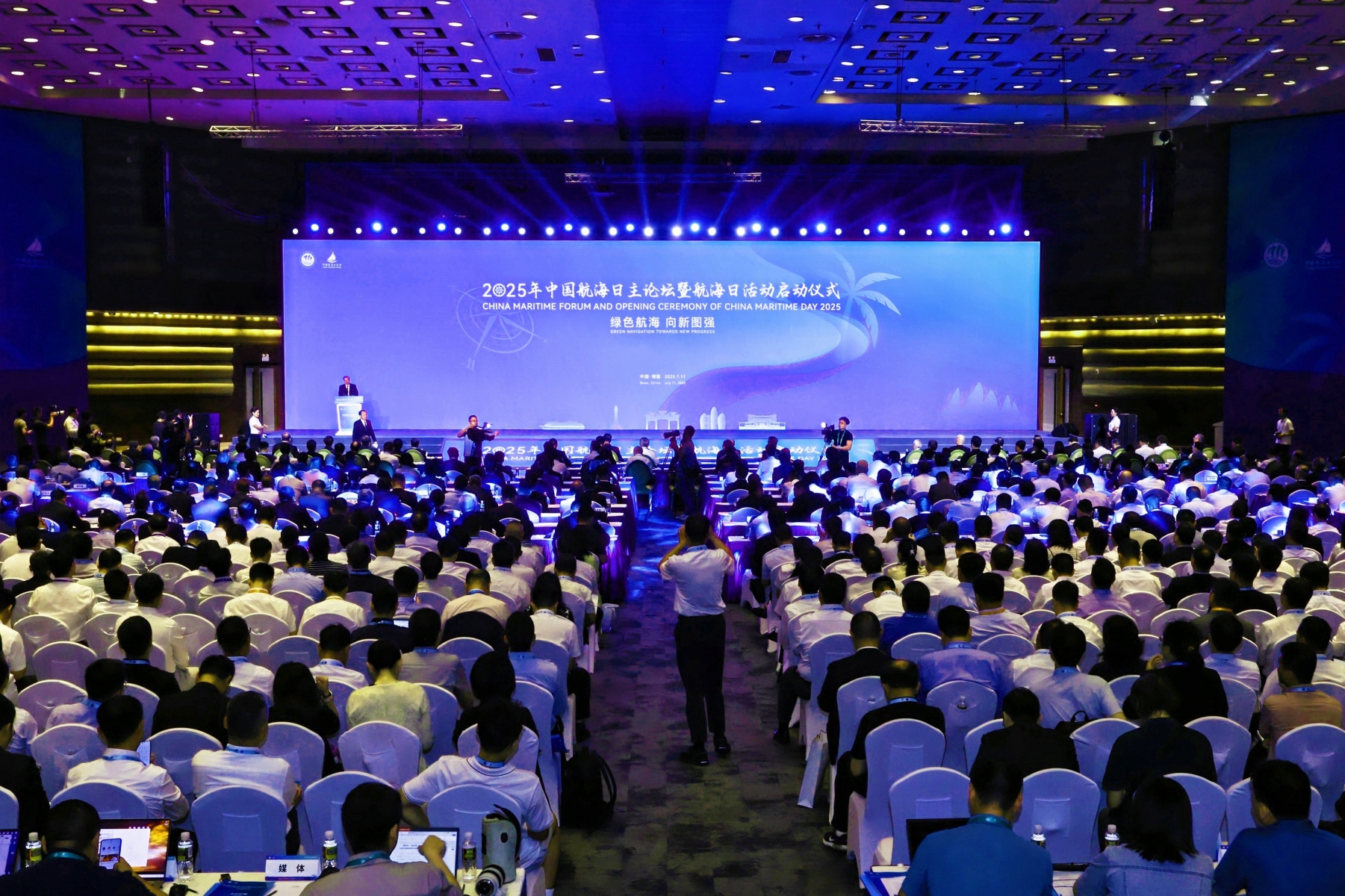
Liu Wei, Secretary of the Party Leadership Group and Minister of Transport, and Chairman of the China Maritime Day Organizing Committee, along with Liu Xiaoming, Deputy Secretary of the Hainan Provincial Party Committee and Governor of Hainan, attended the event and delivered speeches. Fu Xuyin, Vice Minister of Transport, and Gu Gang, Vice Governor of Hainan, delivered keynote addresses. Arsenio Dominguez, Secretary-General of the International Maritime Organization (IMO), delivered a video message. Attendees also included Huang Zhendong, former Minister of Transport, and other senior advisors from the “Veteran Transport” think tank.
The organizing committee released the 2025 China Maritime Day Announcement. Yang Huaxiong, Director of the Water Transport Bureau of the Ministry of Transport and Director of the China Maritime Day Organizing Committee Office, read the Boao Initiative, calling on all stakeholders in the maritime industry to work together to lead the trend toward green, low-carbon, and smart shipping. The event also released the 2024 China Shipping Development Report, announced the 2025 list of Safety and Integrity Shipping Companies and Vessels, the 2025 National Model Workers and Advanced Individuals in the maritime sector, and the 2024 China Institute of Navigation Awards for Scientific and Technological Progress and Technological Invention.
The first phase of the forum was chaired by He Jianzhong, Chairman of China Institute of Navigation (CIN), while the second phase was led by Liu Peng, Director of China Waterborne Transport Research Institute of the Ministry of Transport and Deputy Director of the China Maritime Day Organizing Committee Office.
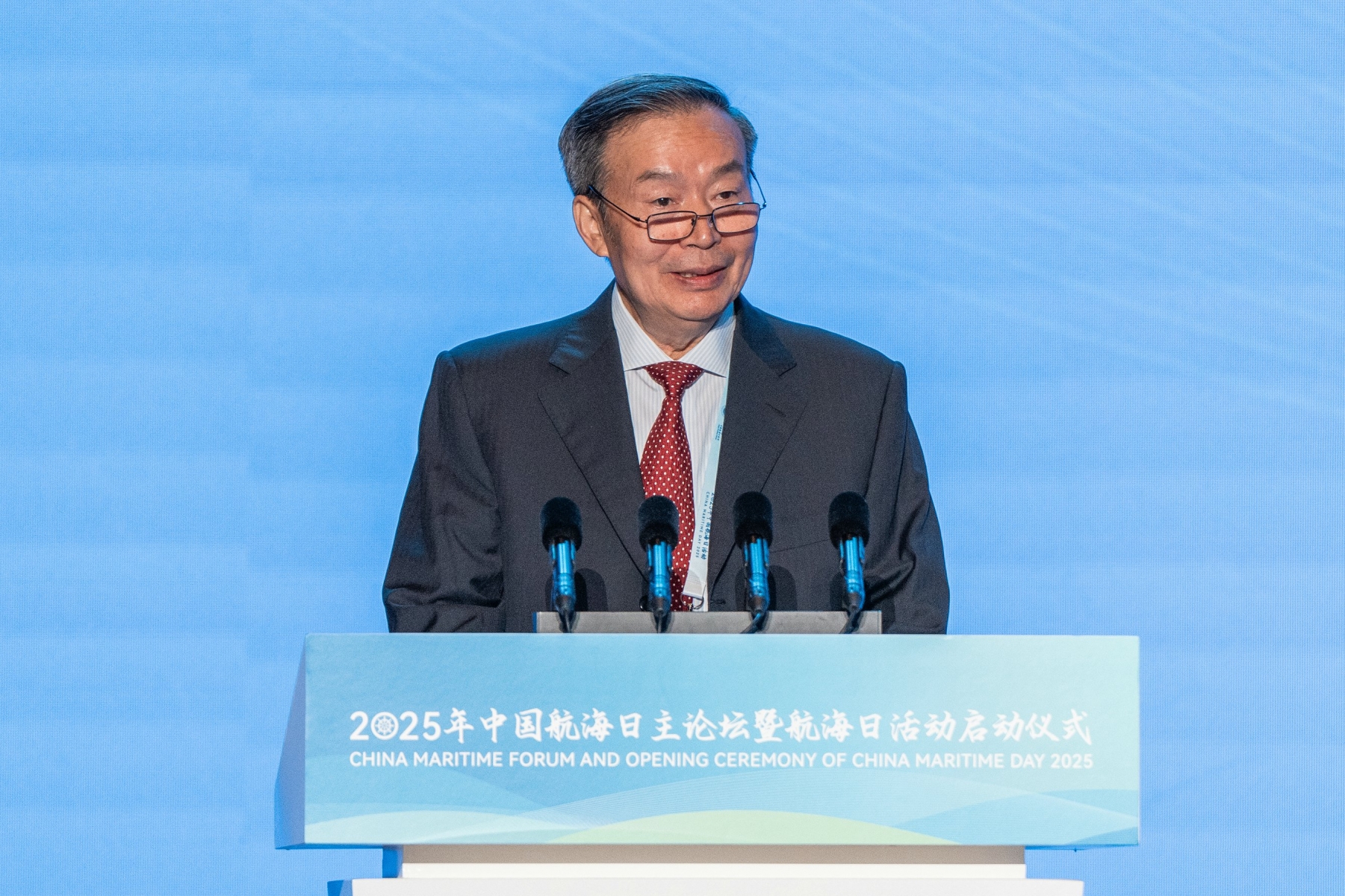
He Jianzhong, Chairman of China Institute of Navigation (CIN)
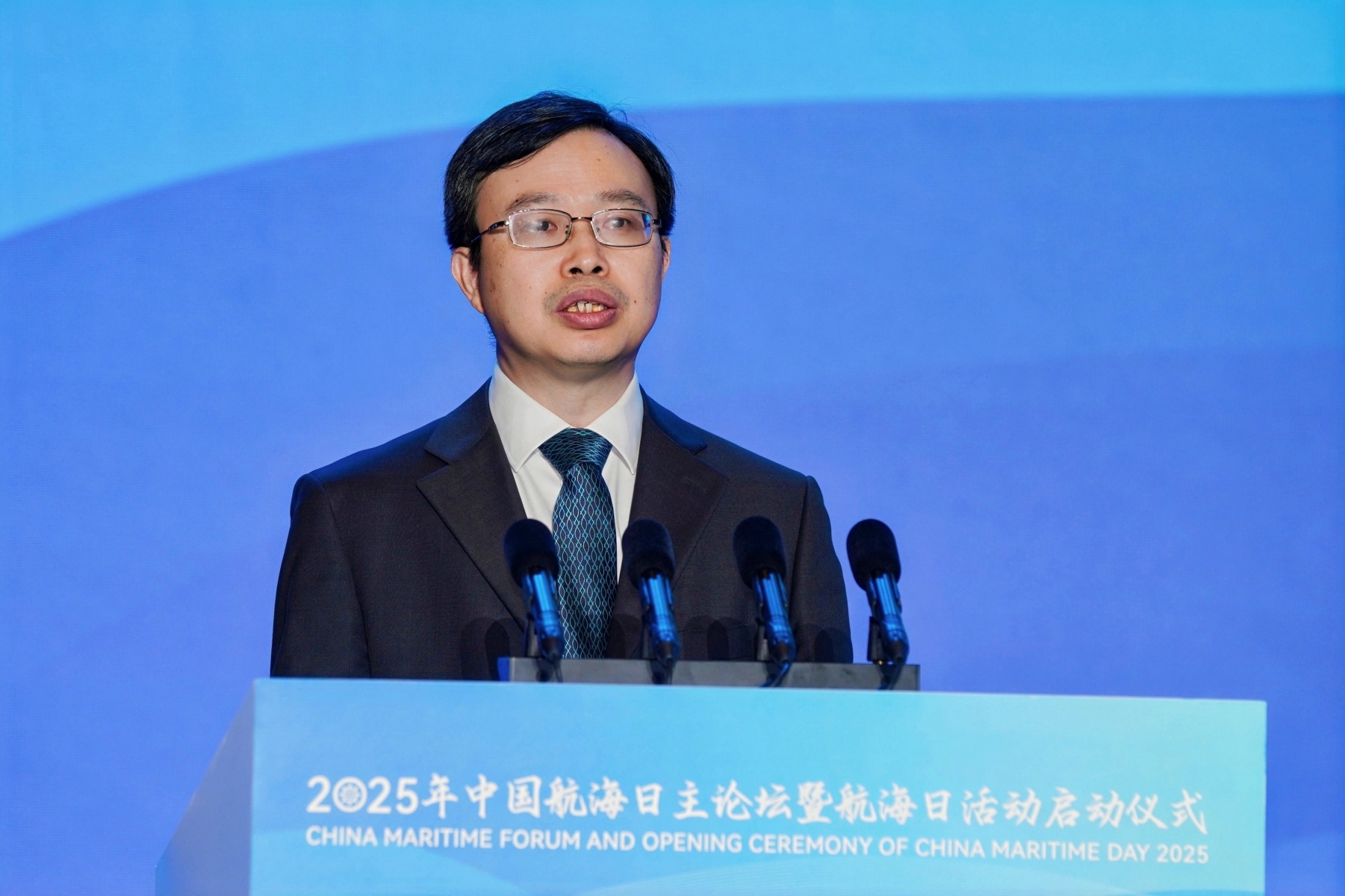
Liu Peng, Director of China Waterborne Transport Research Institute of the Ministry of Transport and Deputy Director of the China Maritime Day Organizing Committee Office
Partcipants of the event also included the representatives from the China Association for Science and Technology (CAST), transport authorities, Hainan Provincial and Qionghai Municipal governments, maritime associations, research institutions, and experts, as well as delegates from international organizations such as the IMO, International Labour Organization (ILO), International Chamber of Shipping (ICS), and International Association of Institutes of Navigation (IAIN), along with shipping industry representatives from over ten countries including the UK, France, and Japan.
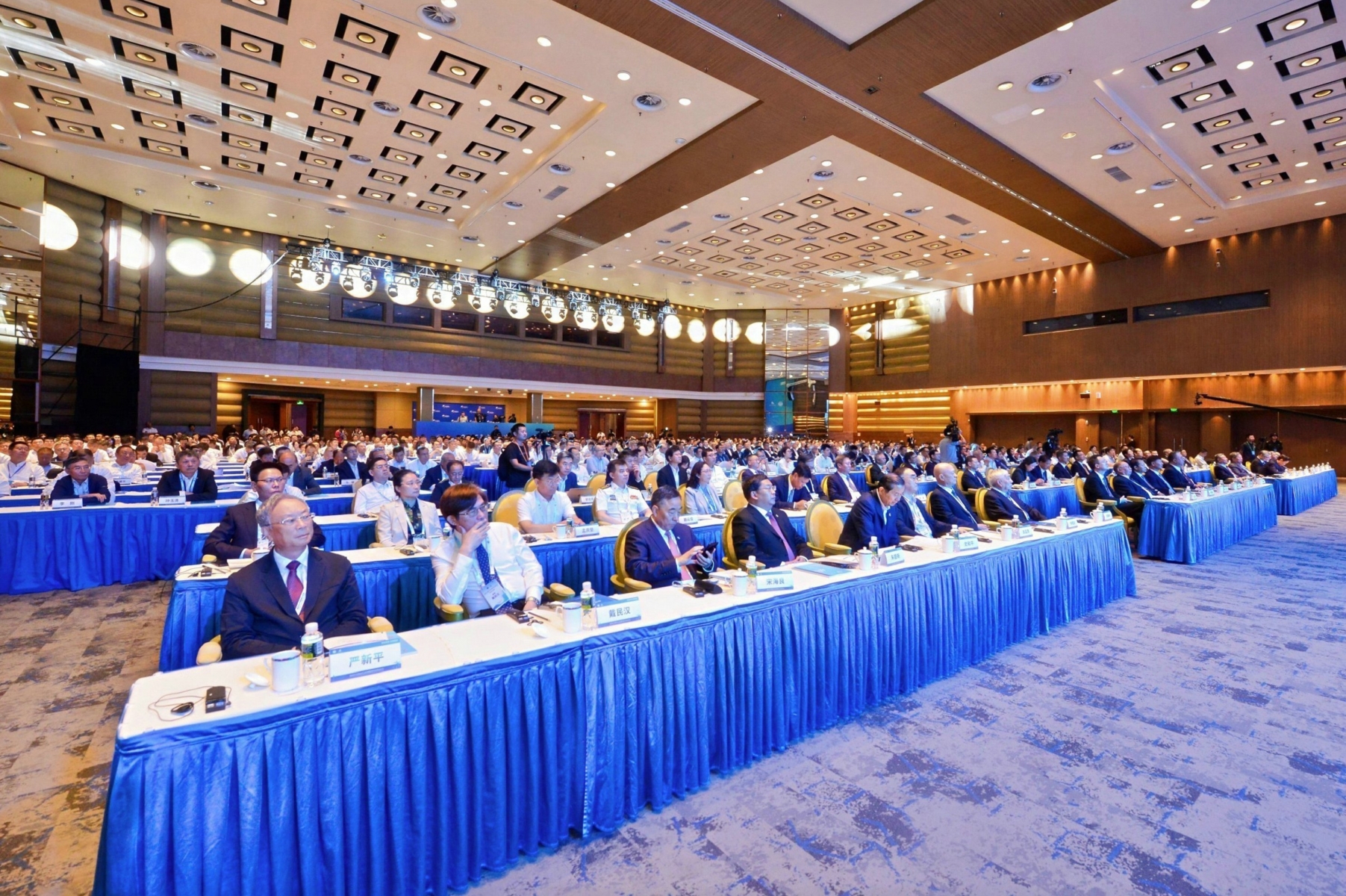
Advance the Construction of a Modern Shipping System
Liu Wei extended holiday greetings to maritime professionals and expressed gratitude to all who have supported China’s maritime development.
As he noted, China established “Maritime Day” to promote the maritime spirit in the past 20 years, preserving maritime heritage, and advancing maritime undertakings to foster shared prosperity. Today, China’s achievements in maritime development have captured global attention, boasting the world's largest fleet, the biggest cluster of world-class ports, and handling one-third of international maritime shipping volume. With its marine economy continuing to grow, China has injected strong momentum into the sustained and stable development of global trade and economy. The Ministry of Transport of China has always attached great importance to maritime development. Guided by the goals of accelerating the building of China into a country with strong transportation network and strong maritime power, it has advanced the modern shipping system, strengthened maritime connectivity with the countries along Belt and Road, provided solid support for serving the new development paradigm, and offered robust guarantees for facilitating global trade.
Liu Wei stated that the global shipping industry is currently undergoing profound transformations. It is essential to align with global trends, advance global cooperation, to ensure that the fruits of shipping development better benefit people all around the world. We should seize the opportunity to forge a new green shipping ecosystem. This involves accelerating the improvement of the policy framework for green shipping, refining standards for carbon emission monitoring and accounting, advancing the research and development of new-energy propulsion technologies and equipment, enhancing the green energy bunkering supply chain, expediting the large-scale application of new-energy and clean-energy vessels, promoting the construction of international green shipping corridors, and facilitating global emissions reduction in the shipping sector. We must also forge ahead with innovation to unlock new driving forces of development. This entails accelerating the cultivation and development of new quality productive forces in the shipping sector, actively expanding the application scenarios of emerging technologies such as artificial intelligence, the Internet of Things, 5G, and Beidou, focusing on the digital transformation and upgrading of shipping infrastructure, and coordinating the development of smart ports, smart waterways, and smart vessels. Emphasis should be placed on data interconnection and sharing, as well as business collaboration, to elevate the digitalization level across all elements and links of the shipping industry. Furthermore, we should keep open and write a new chapter of win-win cooperation jointly. This requires to deepen high-quality cooperation under the Belt and Road Initiative, strengthen the interconnection of international shipping infrastructure, optimize route networks, enhance the alignment of international regulations, uphold a fair and equitable international shipping order, jointly promote the healthy development of the shipping industry, so as to guarantee the security, stability, and smooth flow of international logistics and supply chains.
The foundation for the green development of the shipping industry is becoming increasingly solid.
In recent years, the Ministry of Transport has deepened the optimization and adjustment of the transportation structure, accelerated the clean and low-carbon transformation of shipping energy. It vigorously developed green port and shipping infrastructure, established and improved a system for preventing and controlling pollution from vessels and ports, comprehensively promoting the green transformation of the shipping industry and effectively safeguarding the clear waters and the blue skies.
Fu Xuyin, member of the Party Leadership Group and Vice Minister of the Ministry of Transport, stated that actively responding to climate change and accelerating the green and low-carbon transition is an irreversible trend of the era and a widely shared consensus in the global shipping industry. He emphasized to accomplish three key tasks for the expedition of the green and low-carbon transition of the shipping industry. First, it is crucial to develop green and low-carbon vessels in a robust and orderly manner. The focal point of the green transformation of the shipping industry lies in the development of green and low-carbon vessels, with the key being the iterative application of green marine fuel technologies. The Ministry of Transport will scientifically plan the development path for green and low-carbon vessels, focusing on achieving breakthroughs in key technologies, establishing a comprehensive system of norms and standards, implementing policies for vessel renewal, to ensure robust safety supervision and promote its application in a stepwise manner. It will vigorously support the application and promotion of green and low-carbon vessels, emphasizing the reinforcement of technological innovation leadership, technical standard guidance, and application scenario-driven development. Second, it is imperative to accelerate the construction of world-class green ports. By fully leveraging the role of ports as primary hubs in the comprehensive transportation system and focusing on the goal of building first-class green ports, efforts will be made to expedite the establishment of a green fuel supply system, a green energy utilization system, as well as a green cargo handling and transportation system for ports. Third, it is essential to promote practical global cooperation on green shipping. Green development represents an inevitable choice for humanity in addressing climate change, and no country can remain unaffected in isolation. Only through collaboration can we navigate forward together. China should work with countries worldwide to deepen cooperation on green regulations, standards, and projects, centered around the goal of sustainable development for the global shipping industry.
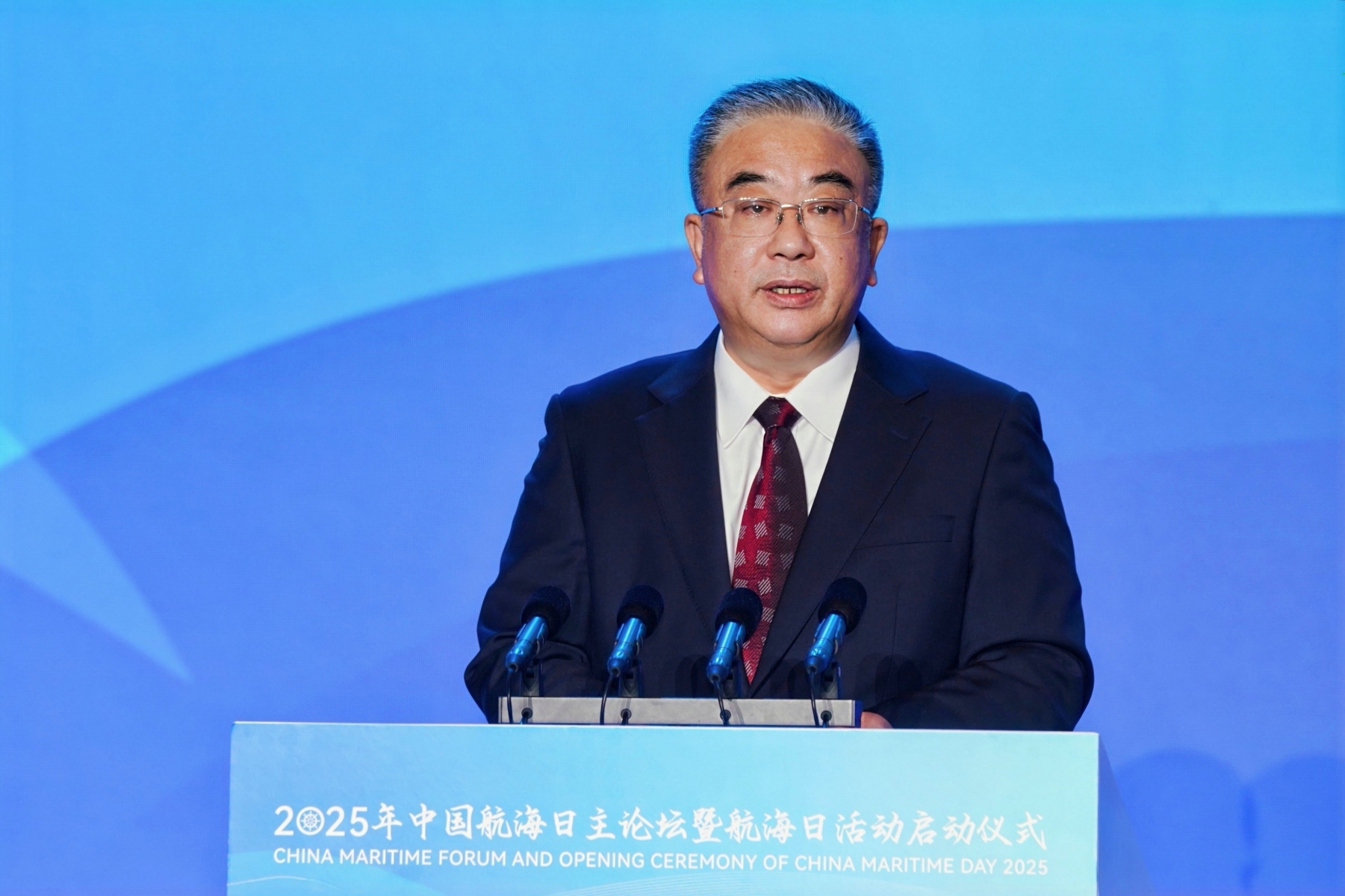
Fu Xuyin, Member of the Party Leadership Group and Vice Minister of the Ministry of Transport
Indicated by the data, China's shipping industry has achieved remarkable results in its green and low-carbon transition, further leveraging the green advantages of water transportation and solidifying the foundation for the green development of the shipping industry. In 2024, the volume of waterway freight transportation reached 9.81 billion tons, 1.64 times that of a decade ago; the waterway freight ton-kilometers reached 14 trillion ton-kilometers, an 8.8% increase from the previous year, accounting for 55.6% of the total freight ton-kilometers. The large-scale application of new-energy and clean-energy vessels has accelerated, with major ports such as Shanghai Port successfully implementing new-energy and clean-energy bunkering services for vessels. The proportion of green container trucks used for operations within international container hub seaports has exceeded 60%. The shore power coverage rate for five types of key specialized berths at major ports nationwide has surpassed 90%, with the regular use of shore power by international mainline container ships and cruise ships during port calls.
Build a Green and Smart Ecosystem Across the Entire Supply Chain
Currently, the global port and shipping industry is accelerating its green and smart transformation, together building a green and smart ecosystem across the entire supply chain.
In his address, Arsenio Dominguez, Secretary-General of International Maritime Organization (IMO), stated that over two decades ago, the international community adopted mandatory measures for the first time to improve ship energy efficiency, followed by further improvements in subsequent years. IMO has set an ambitious goal of achieving net-zero emissions by or around 2050, which was approved by IMO's Marine Environment Protection Committee with several measures to be taken. In October this year, a crucial step will be taken with the formal adoption of the IMO's net-zero framework. This framework will include new global fuel standards and the first pricing mechanism targeting greenhouse gas emissions from ships.
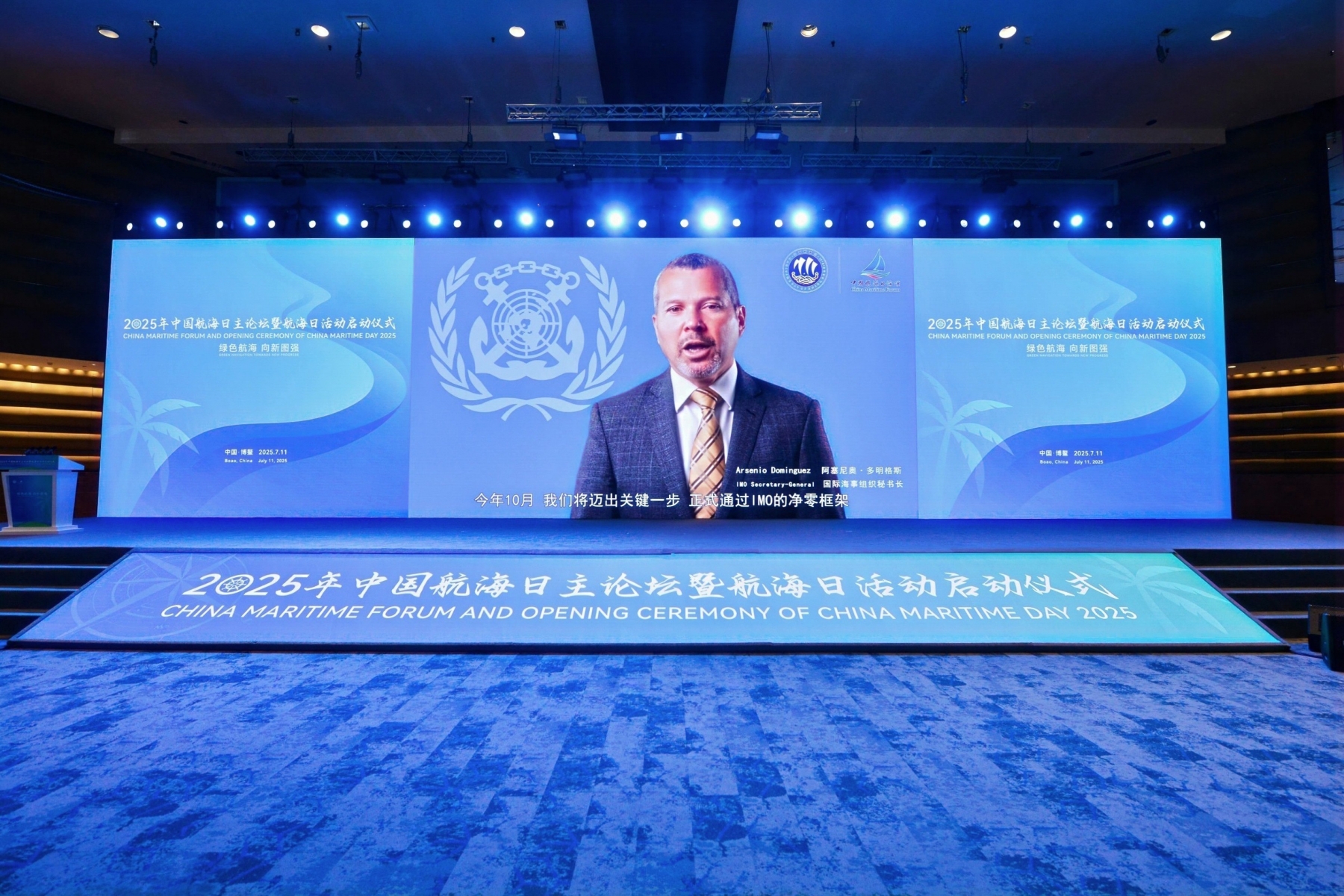
Arsenio Dominguez, Secretary-General of International Maritime Organization
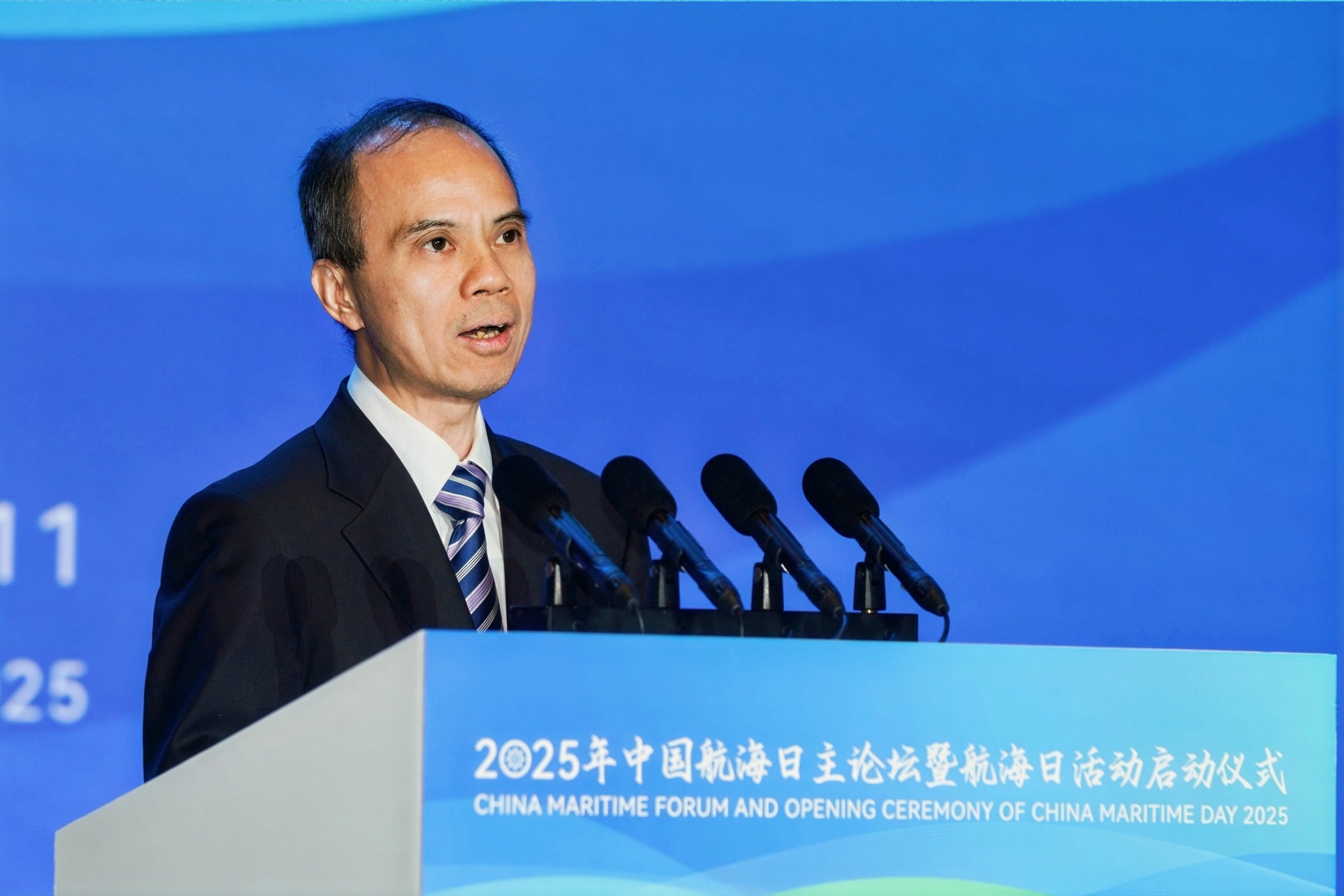
Yang Huaxiong, Director of the Water Transport Bureau of the Ministry of Transport and Director of the Office of the China Maritime Day Organizing Committee, read out the Boao Initiative
Ren Weimin, Director of the Transport Division at the United Nations Economic and Social Commission for Asia and the Pacific (UNESCAP), believes that the shipping industry plays a pivotal role in achieving the 2030 Agenda for Sustainable Development. Currently, there are 62 active green shipping corridor projects worldwide. Among new shipbuilding orders in 2023, 50% are designed to use alternative fuels. However, the development of green shipping faces challenges such as significant investment requirements and uncertainties regarding the future of green ships and fuels. He called on all parties to jointly address disruptions in the global supply chain and maritime traffic bottlenecks, creating favorable conditions for green shipping. International organizations should leverage their convening power to increase certainty in shipping decarbonization and provide platforms for knowledge and experience sharing.
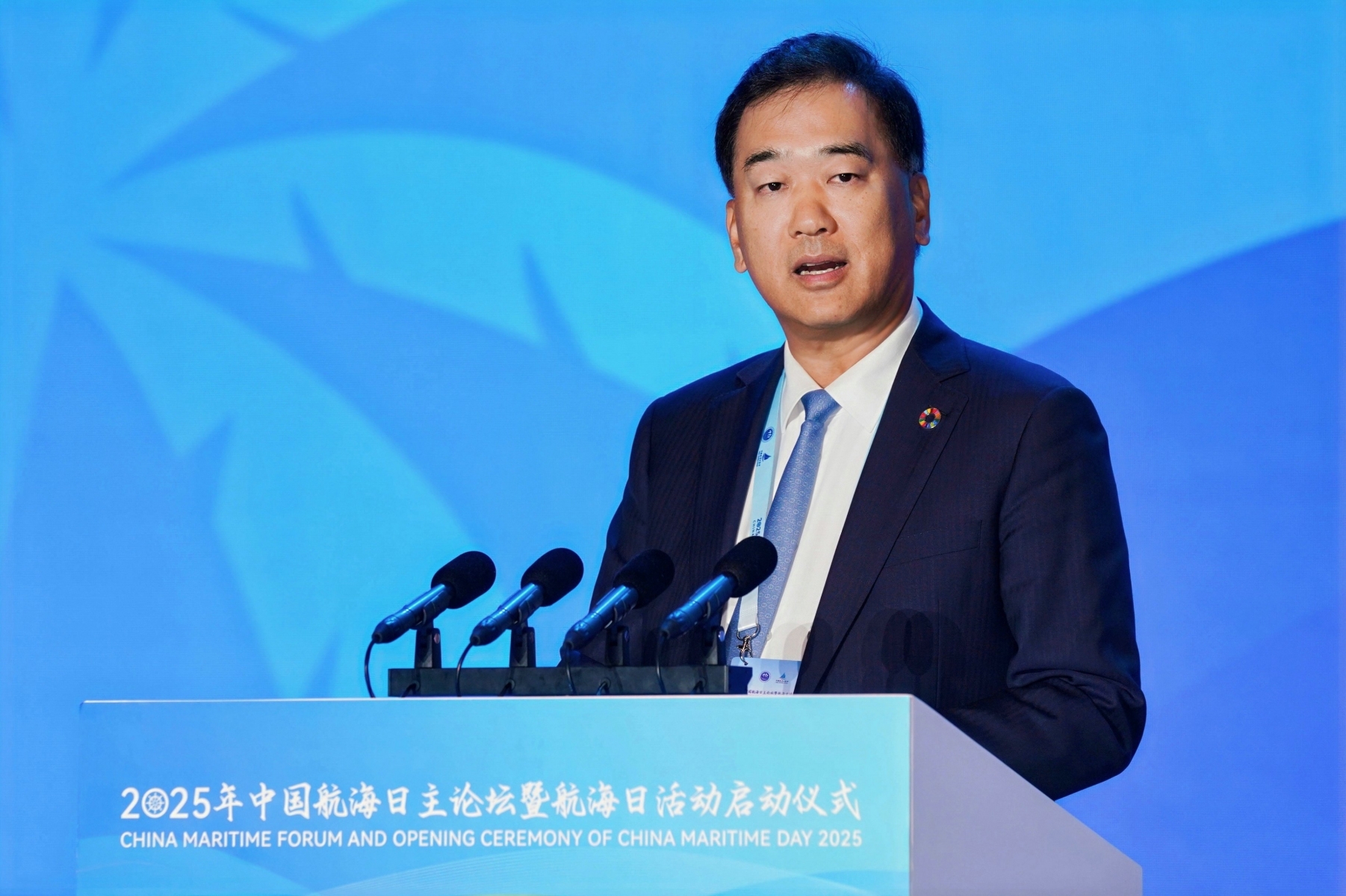
Ren Weimin, Director of the Transport Division at the United Nations Economic and Social Commission for Asia and the Pacific (UNESCAP)
Zhu Bixin, Director, General Manager, and Deputy Secretary of the Party Leadership Group of COSCO Shipping Group, was invited to deliver a keynote speech entitled "Seamless Global Connectivity through Digital and Smart Logistics and Transportation Chains." Zhu Bixin stated that in recent years, COSCO Shipping Group has proactively embraced the new trends of green, low-carbon, and smart development in the shipping industry. The group has made a vision of becoming a world-class shipping technology enterprise, focusing on two new strategic areas: digital intelligence and green low-carbon development. It has vigorously developed the emerging industries such as global digital supply chains, green, low-carbon, and smart ship research and development, marine new energy sources, and smart shipping. COSCO Shipping Group has actively promoted the integrated development of ports, shipping, and trade, shaping new supply chain models through digital technology, constructing new platforms for the shipping industry led by artificial intelligence, and creating a sustainable new ecosystem with green development as the cornerstone. By leveraging the certainty of its high-quality development, COSCO Shipping Group addresses external uncertainties and actively contributes to building a strong maritime nation, a leading transportation power, and a robust trading power. Looking ahead, COSCO Shipping Group will utilize digital and green technologies as significant drivers for global shipping transformation, fully leveraging its advantages in global shipping and industrial synergy. It will spare no effort in advancing the construction of "three major platforms": a global digital supply chain, a full-lifecycle digital and smart ship operation platform, and a global talent development platform. By promoting seamless global connectivity through digital and smart logistics and transportation chains, COSCO Shipping Group will contribute China's shipping strength to global economic and trade prosperity in the new era.
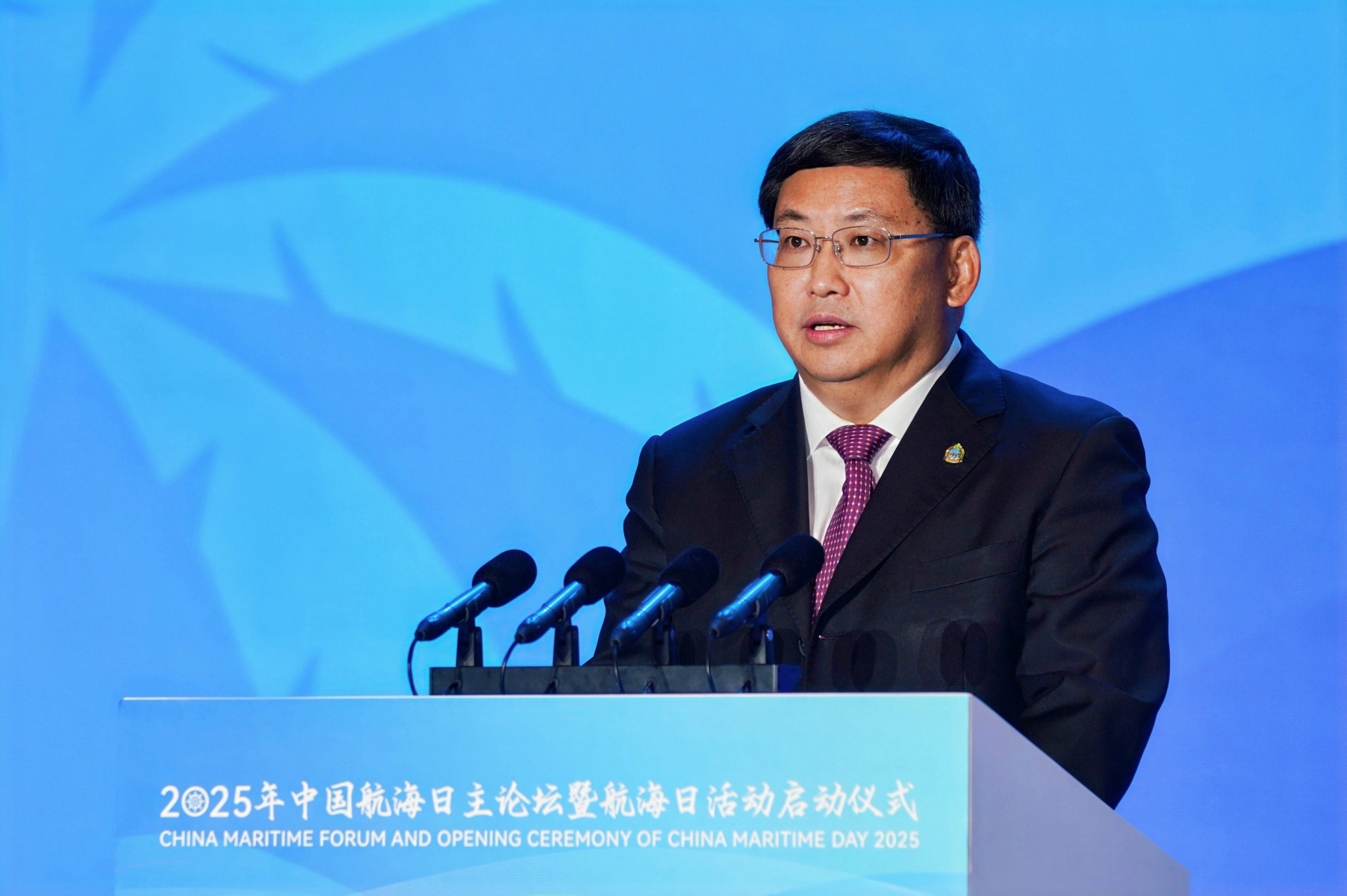
Zhu Bixin, COSCO Shipping Group Director, General Manager, and Deputy Secretary of the Party Leadership Group
China Merchants Group is also advancing with dual momentum in the fields of green development and intelligent technologies. The carbon emission intensity of China Merchants Group’s shipping business in China has decreased by 12.4% compared with four years ago; in the first half of this year alone, carbon emissions were reduced by 126,000 tons. The vessel New Eternity, the world’s first ultra-large oil tanker equipped with twin-wing wind-assisted propulsion, can help reduce carbon emissions by about 2,200 tons annually, which turns to be an outstanding representative of a new generation of energy-saving and environmentally friendly ships. At the same time, China Merchants Group is accelerating the refinement of its capabilities in the design, research and development, as well as construction and repair of green marine equipment. Its LNG ship repair business ranks first nationwide, and green-powered vessels fueled by LNG, methanol, and ammonia account for 70% of its orderbook. Shi Dai, General Manager of China Merchants Group Co., Ltd., believes that digital-intelligent technologies are rapidly permeating the entire industrial chain of shipping, ports, and logistics, which has become a vital engine for industry development. At present, China Merchants Group has developed the “ShippingGPT” maritime AI large model and the “Chuanqi Xiaozhi” intelligent platform. Its subsidiary Shenzhen Mawan Smart Port has integrated nine major smart elements, achieving a breakthrough in autonomous port operation systems from “zero,” and has successfully promoted their application in domestic and overseas ports. Meanwhile, the integration of AI with logistics has achieved remarkable results: the Group has developed visual inventory systems, intelligent forklifts, and automated loading products, filling key gaps in the industry.
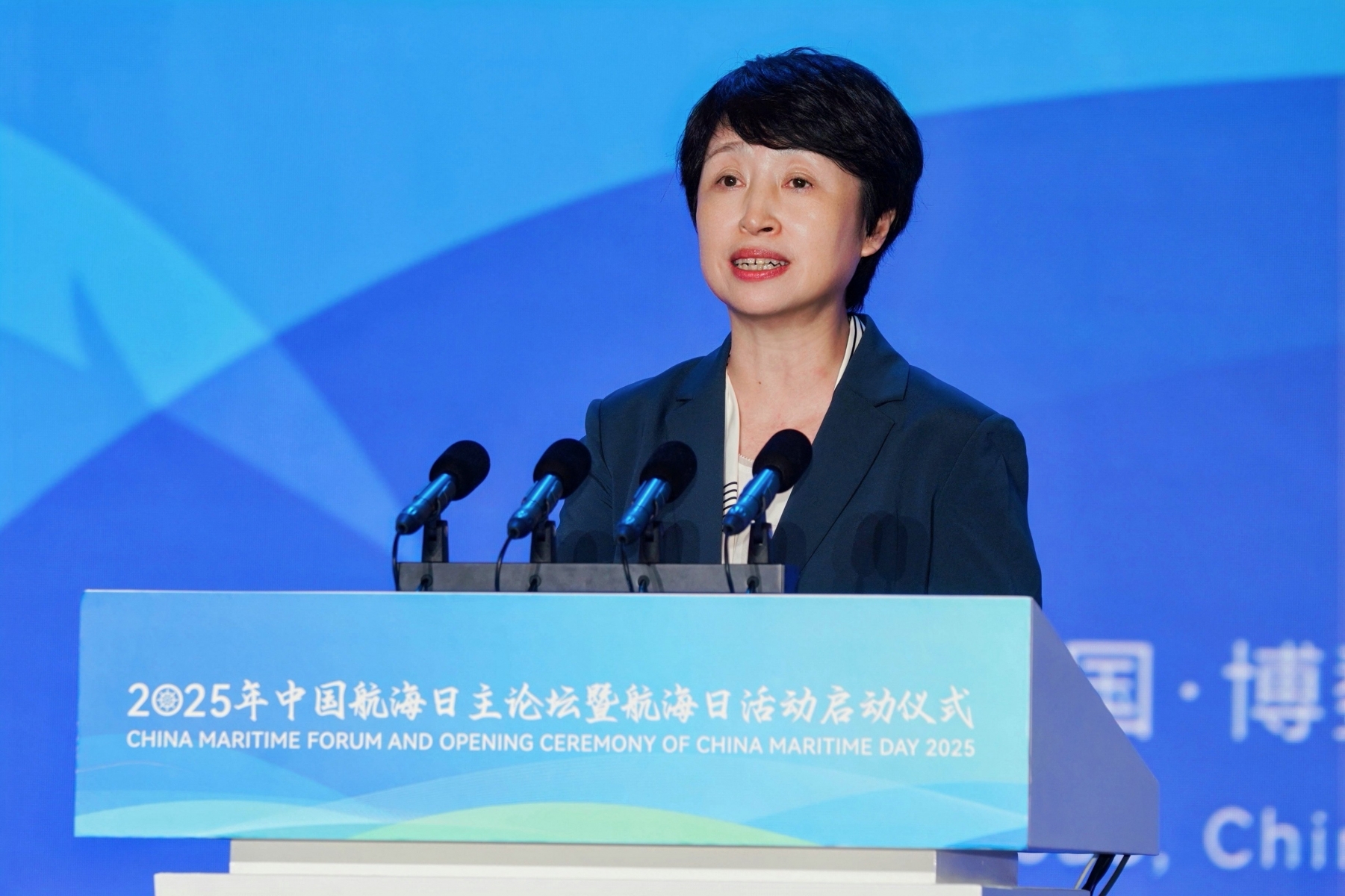
Shi Dai, General Manager of China Merchants Group Co., Ltd.
Gu Jinshan, President of China Ports & Harbors Association, stated that China’s shipping industry is at a critical stage of moving from “large” to “strong” and advancing toward world-class standards. He believes that ports will not only serve as logistics hubs, but also as hubs for information, technology, and energy in the future. Ports need to be transformed from traditional physical nodes into composite hubs of “logistics + digitalization,” “logistics + intelligence,” and “logistics + low carbon.”He suggested that port enterprises should jointly formulate data-sharing standards, promote the establishment of unified industry data interface standards and sharing protocols; collaborate to build data-sharing platforms to achieve limited and orderly sharing of key information such as vessel movements, cargo tracking, port operations, and customs inspections; and work together to build a “digital port and shipping” ecosystem. This would promote the seamless integration of all nodes across the logistics chain—ports, shipping, cargo owners, freight forwarders, road transport, railways, and customs—achieving “point-to-chain, chain-to-network, seamless connection,” thereby enhancing full-process supply chain visibility and collaborative efficiency.
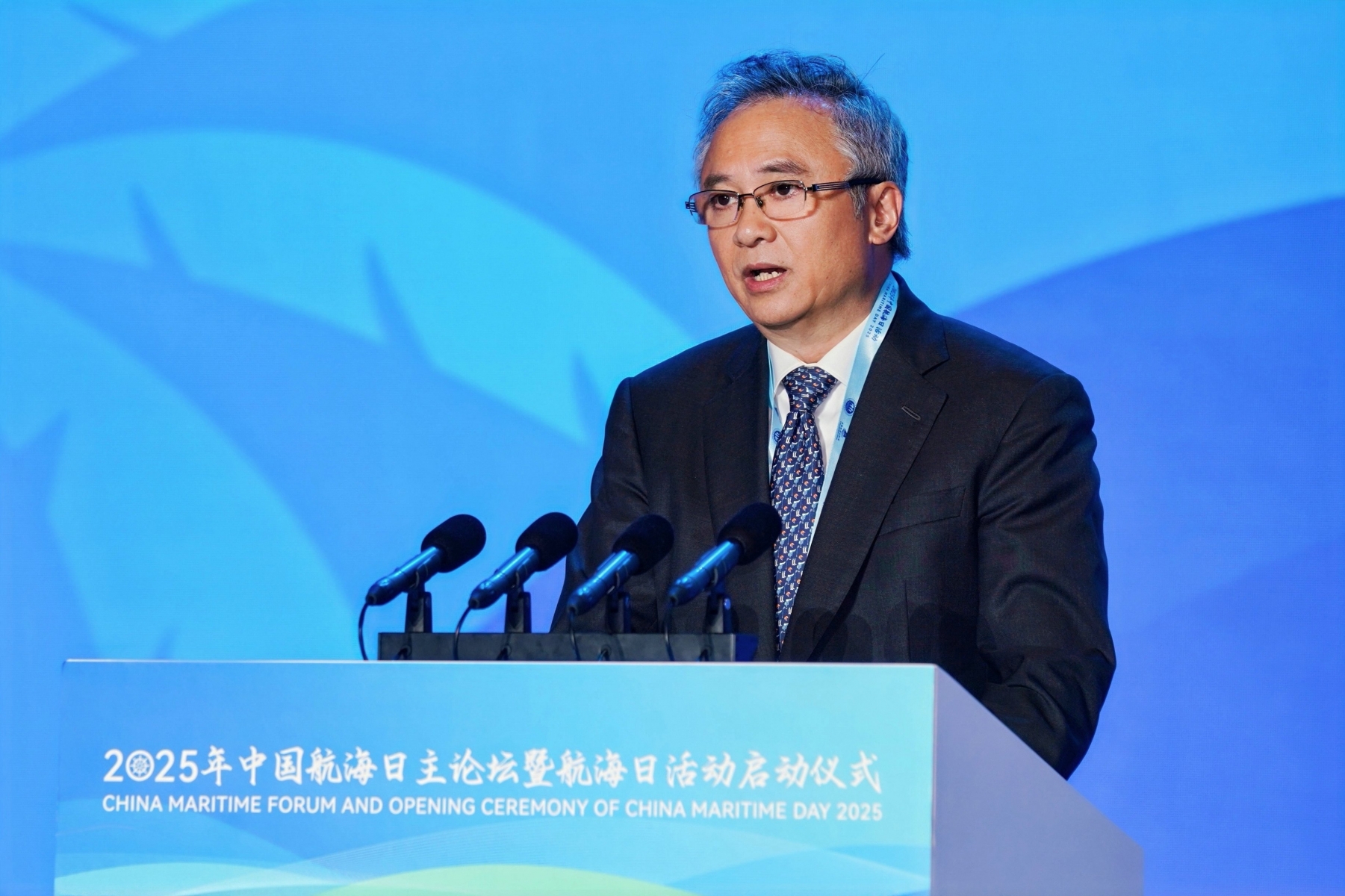
Gu Jinshan, President of China Ports & Harbors Association
Rapid Development of Hydraulic Engineering and Equipment Technology
In recent years, China’s hydraulic engineering and equipment technology has seized development opportunities and achieved a series of new results in basic theoretical research and innovative applications.
Yan Xinping, Director of the National Key Laboratory for Waterway Traffic Control and Professor at Wuhan University of Technology, introduced that the waterway traffic control system is undergoing transformations: from individual control to networked control, from localized waterway control to wide-area collaborative control, and from passive accident response to proactive full-process control.
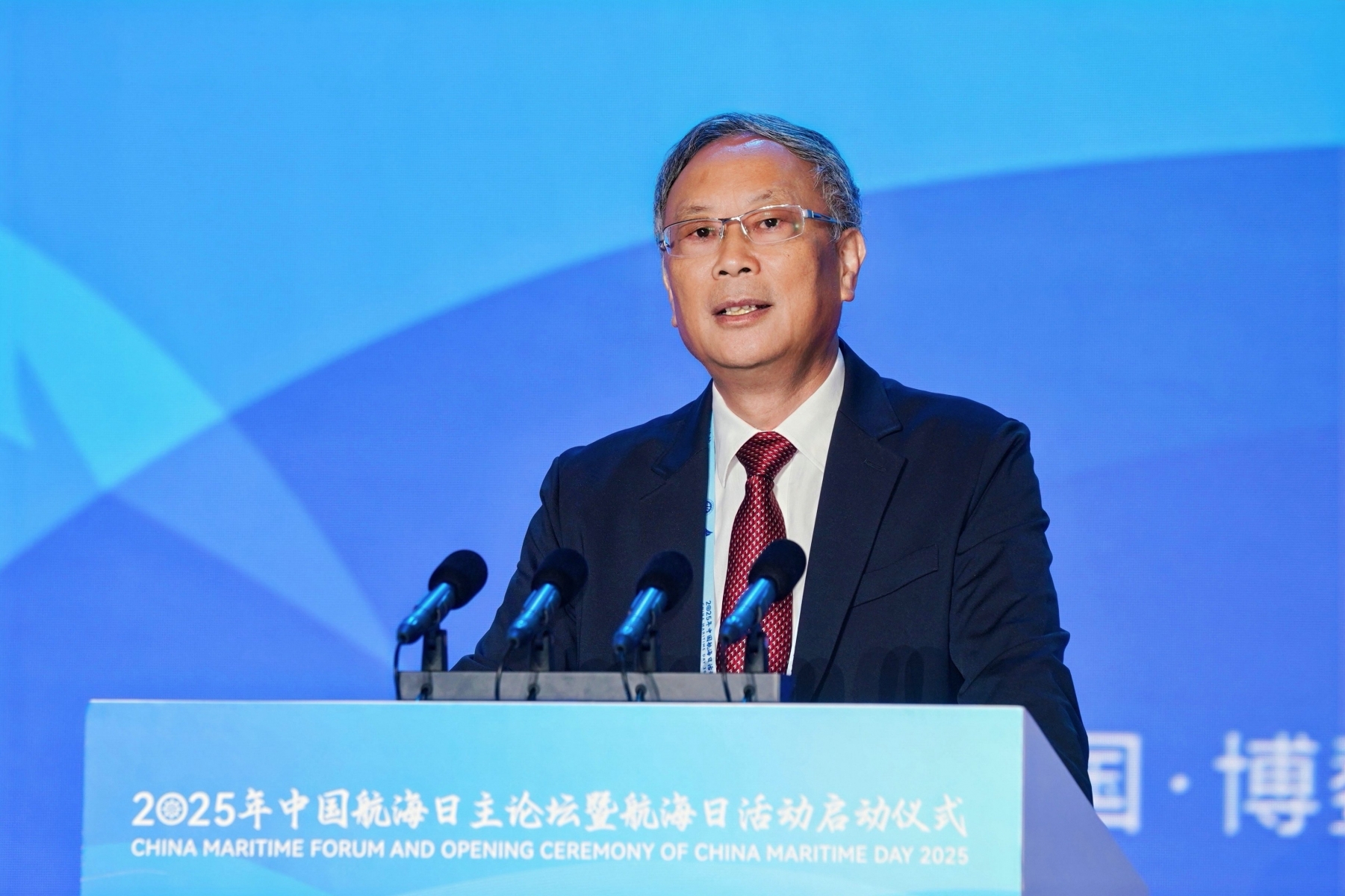
Yan Xinping, Director of the National Key Laboratory for Waterway Traffic Control and Professor at Wuhan University of Technology
As the main force in China’s infrastructure construction, China Communications Construction Company Limited (CCCC) has designed and built more than 80% of China’s large coastal ports, and its port machinery equipment has maintained over 70% of the global market share for 27 consecutive years. Song Hailiang, Chairman of CCCC, stated that the company is focusing on the strategy of the “Four Completes and Four Major Fields (Complete Transportation, Complete Cities, Complete Water, Complete Digitalization; Major Overseas, Major Equipment, Major Industry, Major Integration)”. The company is striving to build itself into the leading enterprise of the smart port and shipping modern industrial chain, taking the lead as a national team pioneer, and contributing CCCC’s strength to the high-quality development of China’s shipping industry.
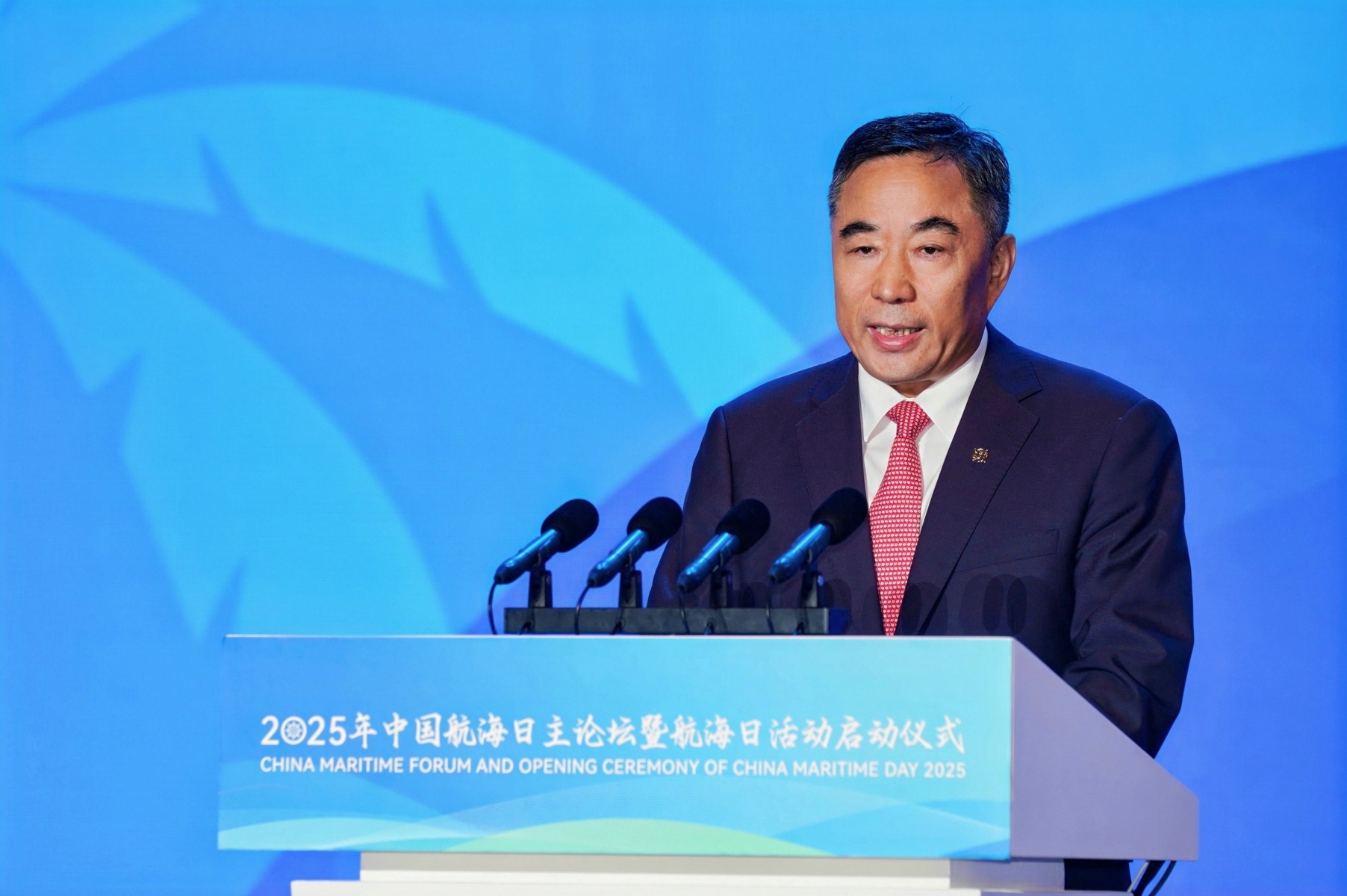
Song Hailiang, Chairman of China Communications Construction Company Limited
Technological breakthroughs in inland waterway shipping have likewise injected strong momentum into the high-quality development of China’s shipping industry. Niu Xinqiang, Chief Scientist of Changjiang Institute of Survey, Planning, Design and Research Co., Ltd., explained that most of China’s ship lifts are located in mountainous gorge river sections and on high dams, which are faced with technical challenges such as complex hydraulic conditions, large lifting heights, and heavy vessel tonnage. After decades of scientific research and engineering practice, China has achieved major breakthroughs in the key technologies of large-scale high-head ship lifts, reaching independent controllability and domestic production of core equipment. Representative projects such as the Three Gorges Ship Lift on the Yangtze River, the Xiangjiaba Ship Lift on the Jinsha River, the Goupitan Ship Lift on the Wujiang River, and the Tingzikou Ship Lift on the Jialing River have provided strong support for unblocking inland waterway shipping, improving channel grades, and promoting the development of water transport.
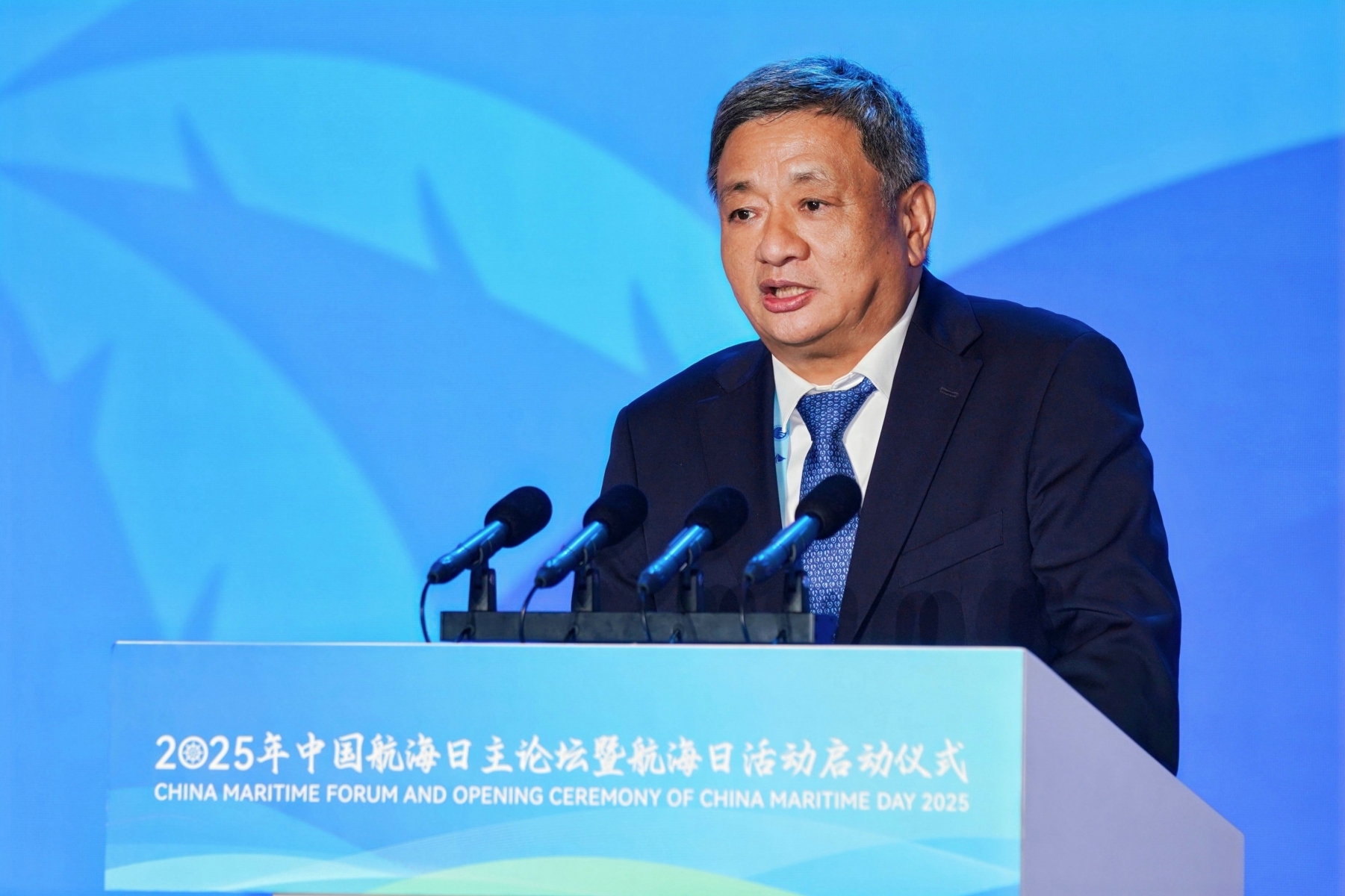
Niu Xinqiang, Chief Scientist of Changjiang Institute of Survey, Planning, Design and Research Co., Ltd.
Hainan Free Trade Port enters a stage of substantive formation and momentum.
Liu Xiaoming stated that Hainan is currently accelerating the construction of the Free Trade Port, fully leveraging its natural advantages in climate, ocean depth, geographic latitude, and green ecology—which can be summarized as the “three dimensions and one color”—as well as its institutional advantages in openness. Solid efforts are being made to implement the “Five Maritime Strategies” including “Striving for Strength at Sea,” to advance the building of a maritime powerhouse province, and to recreate a “maritime Hainan” within 10 years.
——Expanding openness and cooperation in shipping — Building the “Hainan Gateway”. Hainan focuses on establishing “two bases, two hubs, and two networks”, aiming to buid an important convergence point for China’s dual circulation strategy (domestic and international). By 2024, supported by the two hubs of shipping and aviation, Hainan will launch new ocean routes to the Middle East, South America, Africa, and Oceania, bringing its total number of container liner routes to 72.
——Enhancing shipping service capacity — Building “Hainan Power”. By advancing the “Striving for Strength at Sea” initiative, Hainan’s marine economy has achieved an average annual growth of 13.9% over the past four years, with its regional marine innovation index ranking among the top nationwide. The province also established China’s first International Ship Registration Authority, responsible for the full lifecycle management of vessels registered under the “China Yangpu Port” flag. Over 60 vessels have been registered, with total tonnage ranking second nationwide.
——Developing green and smart shipping — Building the “Hainan Model”. Hainan is accelerating the deployment of clean marine fuel supply chains, working to establish a green bunkering hub, and building LNG and green methanol refueling systems for ships. It is also advancing the development of smart ports, aiming to make Yangpu Port the world’s first “intelligent, green, zero-carbon hub port.”
As a vital node of the 21st Century Maritime Silk Road, Hainan’s shipping industry serves as a crucial link in connecting domestic and international markets, playing an irreplaceable strategic role in the construction of the Hainan Free Trade Port.
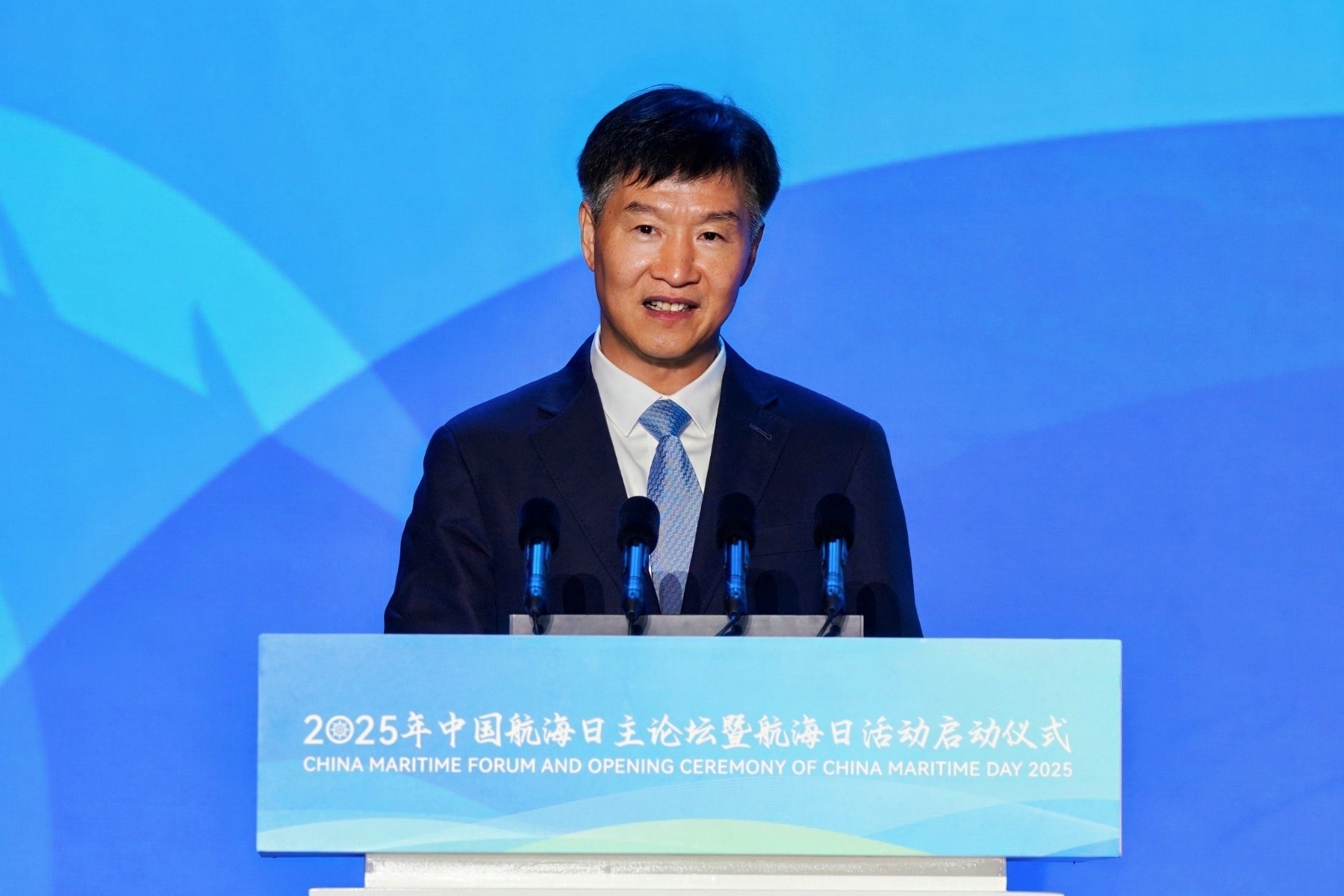
Liu Xiaoming, Deputy Secretary of the CPC Hainan Provincial Committee and Governor of Hainan Province
Gu Gang highlighted the province’s strategy to harness smart technologies, green transitions, and institutional innovation in building itself into a pioneering hub for new-quality productive forces in shipping. First, in smart port development, Hainan is constructing a digital matrix anchored by one flagship port with coordinated regional support. All provincial ports are undergoing synchronized digital upgrades, with Yangpu Port leading the establishment of a maritime big data center. This initiative integrates 12 core data categories into a unified digital management platform to enhance efficiency and connectivity across the region. Second, in the path toward low-carbon transition, the province is advancing a “green ports & vessels” dual-track initiative. By the end of 2025, shore power facilities will cover all ports in Hainan, significantly reducing emissions from docked ships. Meanwhile, Yangpu Port is piloting a hybrid wind-solar-battery charging project designed to optimize renewable energy utilization. The province aims for green energy to account for over 90% of port electricity consumption by 2027, setting a benchmark for sustainable port operations. Third, in institutional innovation, Hainan aims to position itself as a leading platform for global maritime trade. The province is aligning with high-standard international rules, exploring open shipping policies, and fostering the free cross-border movement of vessels, crews, capital, and other key elements in the maritime sector. These efforts are designed to elevate Hainan’s role on the world stage as a hub for international shipping and trade.
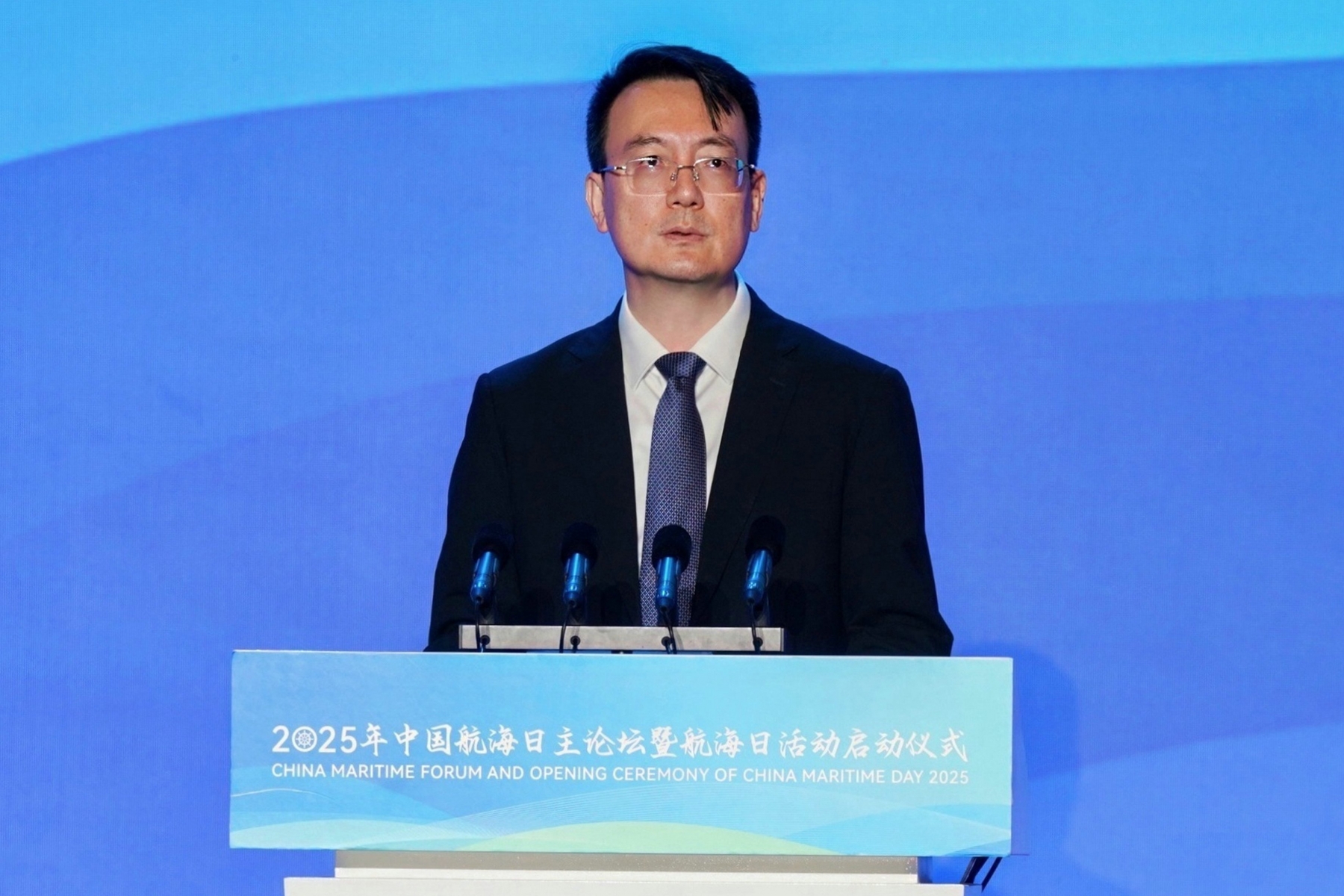
Gu Gang, member of the Leading Party Members Group and Vice Governor of the People’s Government of Hainan Province
